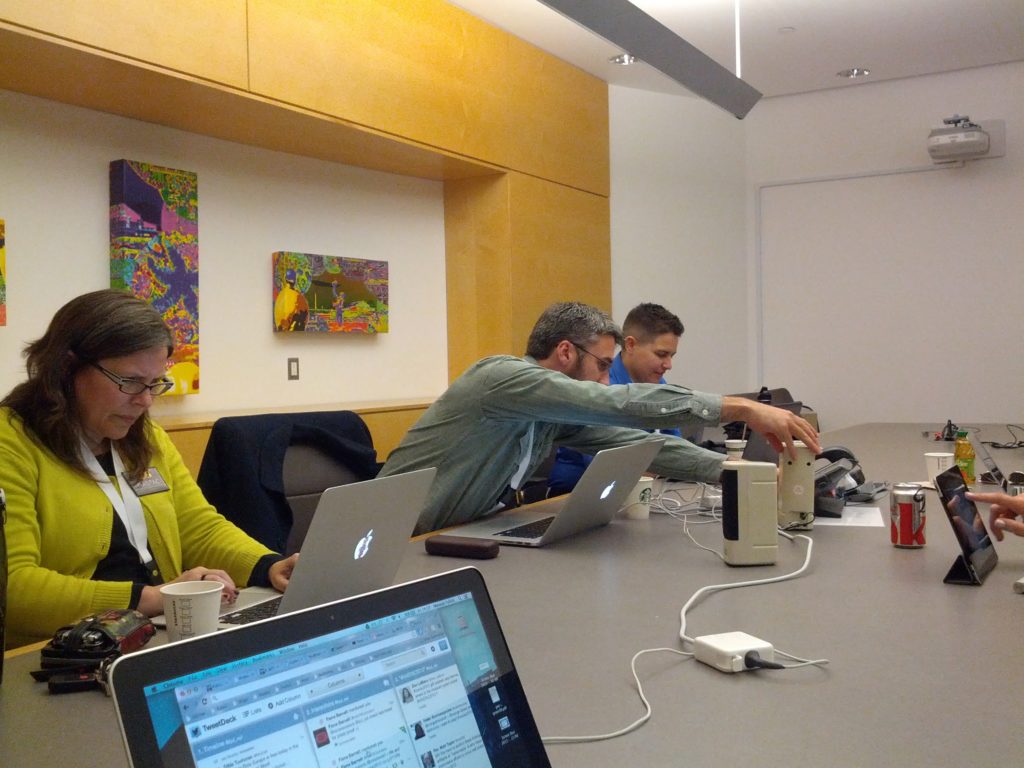I wrote up a few comments about a conference held at OISE in February 2012, where the discussion of potential new universities in Ontario often returned to a recommendation that the province create teaching-focussed institutions. This separation of teaching and research doesn’t take into account – among other things – the lack of prestige attached to teaching work in universities. Here is a link to the original post from February 17, 2012: The economics of learning.
Last week on February 7, a conference was held at the Ontario Institute for Studies in Education at the University of Toronto (OISE) on the subject of the new universities (or campuses) that have been proposed by the Ontario provincial government. The conference included speakers who discussed various issues relating to the creation of the new campuses, and there was also a particular focus on ideas put forth in the book written by Ian D. Clark, David Trick and Richard Van Loon, entitled Academic Reform: Policy Options for Improving the Quality and Cost-Effectiveness of Undergraduate Education in Ontario. Though unable to attend the conference in person, I was able to watch it live from home via OISE’s webcasting system; since I’ve been following this issue for a number of months, I thought I might share some comments.
As conference participants discussed, there are many possibilities for what new “teaching oriented universities” might look like. The question is, what’s the context of their creation and what actual forms and practices will emerge? What kinds of “campuses” will these be, and what logic will drive their governance? For example, will they be like the liberal arts colleges of the United States where prestigious faculty engage in teaching while also producing research? My guess is that the answer is “no”, because this would conflict with the need to save money by significantly increasing teaching assignments per professor, which — as it turns out — is the goal.
One thing I felt was a bit lacking at the conference was discussion of the fact that in the broader “academic economy” teaching is simply considered less prestigious than research, and that means a hierarchy of institutions is likely to emerge. In a differentiated system, universities will tend be different, but not “equal.” What will be the implications of this for the new universities, for the hiring of teaching staff (for example)? Will faculty hires see these institutions as less desirable stops on the road to a “real” university job at a research-oriented university? I believe one speaker, Tricia Seifert of OISE, did address this problem by suggesting (among other things) that we should do more during PhD education to privilege teaching and to build the prestige of pedagogical work in the academic profession.
A related point is that in Drs. Clark, Trick and Van Loon’s model, there seemed to be an assumption that teaching quality operates in a simplistically quantitative way (behaviourism never really goes away, does it). A 4-4 teaching “load” (80% teaching, 10% research, 10% service) is not just about having the same number of students split up into smaller classes; juggling and planning for multiple classes is more work. As Rohan Maitzen pointed out on Twitter, teaching involves more than “just standing there” (many hours of preparation, for example).
To continue with the theme of prestige and the devaluing of teaching, what I noticed when I read the book excerpt is that the word “university” is going to be applied to the new institutions partly as a means of marketing them to squeamish students. The authors state explicitly that “every effort in Ontario to create a label that resides in between colleges and universities – such as “institute of technology,” “polytechnic university,” “university college” and the like – has failed to find acceptance and has led to requests for further changes.” Yet somehow “mission drift” — the tendency of universities to want to climb the ladder to a more research oriented status — must be prevented through government regulation and a strict mandate.
This is one reason why existing institutions may be disappointed if the think they will be sharing in the new expansion. What “new” means is not an extension of other campuses, nor a conversion of an institution of one kind into a different type (i.e. college into university); what’s desired is a “clean slate.” A likely goal is to save money by preventing the duplication of governance structures like unions and tenure, because these reduce “flexibility” and increase costs. This could lead to the 31% cost savings predicted by the authors, who nevertheless expect the new universities’ faculty salaries and benefits will remain competitive (my prediction is that salaries will be lower).
The purposes for building new teaching universities are not just pedagogical but also economic and political. Providing more access to postsecondary education is politically expedient and also matches the economic logic of the day, which is that building human capital for the knowledge economy can only occur through increased PSE acquisition. But as Harvey Weingarten pointed out at the OISE conference, campuses can’t be built unless there is government funding available for the purpose — and now we’re hearing that there isn’t any funding. I suspect that the release of the Drummond Report this week only confirms this, adding pressure to the process of imagining new teaching-intensive universities. It may now be even more difficult to ensure that pedagogical rather than just economic logic is what wins out.


